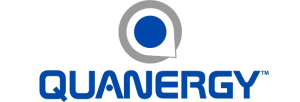Quanergy: Look Ma! No Hands

How a Silicon Valley start-up is helping accelerate the adaptation of driverless cars.
Removing the Driver
The transportation landscape is rapidly evolving and one of the most exciting developments in this space has been autonomous vehicles. Autonomous vehicle technology has the potential to make getting from point A to point B much more safe, efficient and productive. In the future our cars will need to accurately perceive the environment, analyze complex situations and make difficult decisions to keep us safe.
Systems of sensors, cameras and radar enable these vehicles to understand their surroundings with a high level of accuracy and one of the most critical sensing technologies is lidar, which is a form of radar that uses light to detect objects. A rotating laser is used to map physical features and survey the environment with extremely high precision. The problem is that current lidar systems are expensive (up to $80,000 per vehicle for Google’s prototypes), which acts as a major barrier to mass market implementation.
Quanergy
Quanergy Systems, Inc. is a Silicon Valley startup that is tackling this problem and has developed a new solid-state lidar sensor. This new design has dramatic improvements over systems that are currently available, boasting major upgrades in performance, reliability, size, weight and power consumption. The new design has no moving parts and can be neatly fit into the body of vehicles (compared to current systems which are placed on top of the roof). However, the real innovation is the price point, which will be around $250.
To put it simply, Quanergy is all about design and innovation. Their business model is focused on being a leader in 3D sensing technology by creating it from the ground up. Their innovations are covered by 8 patents, which demonstrates their strength in research and development. However, designing and developing a product is only the beginning. A firm must to be able to efficiently manufacture the product and due to the complexity of these components this is no small feat for a tiny innovation company.
Due to the potentially large market for these new lidar sensors there could be high demand which would strain the small start-ups operations. Also, the customer’s expectations for quality are extremely high due to the fact that these components are mission critical and safety related. Quanergy’s operating model has taken these complicating factors into account and mitigated the risks by collaborating with industry leaders to help bring this technology to market.
Focus on Partnerships
Quanergy understands their core competencies are in R&D and isn’t afraid to seek out help in areas where they don’t have the necessary capability. Two of the most critical partnerships they have are with Flextronics and Delphi. Flextronics is a global leader in developing and manufacturing innovative technologies and will help produce the component starting in Q3 of 2016. Delphi is one of the top tier one suppliers in the automotive industry and will bring expertise in system integration and help out on compliance with automotive standards.
They also have forged partnerships with major automotive OEMs, such as Mercedes Benz. These close relationships with end users allow them truly understand their customers needs, which is critical for a company that is focused on continually innovating. This may help them recognize new market opportunities in the future.
These partnerships allow Quanergy to focus on their strengths in designing and developing technology and provide powerful support to get this product to market successfully. If Quanergy chose an operating model where they had control over manufacturing and operations, it would take a long time to build the necessary expertise and may result in them failing to meet their potential.
Looking Forward
Only time will tell if Quanergy will be a true success story in the long run. At this point, they are an excellent example of an organization that has focused on the design of their operating model to make up for deficiencies in their business model. Quanergy has leveraged their core competencies and strategically filled the gaps to ensure wide-spread adoption of this impressive technology.
Sources
http://delphi.com/media/featurestories/Detail/Split%20Second%20Decisions
http://delphi.com/images/default-source/feature-stories/lidar-system-then-vs-now.jpg?sfvrsn=5
http://www.autonews.com/article/20151026/OEM06/310269985/delphi-quanergy-team-up-on-low-cost-lidar




Love the title of this post, Rob! What an interesting company — I had no idea how expensive lidar technology was. Given that partnerships are crucial to the operating model of the company, I wonder how exclusivity agreements might affect Quanergy’s growth. For example, would Mercedes be ok with a Quanergy-BMW partnership in the future?